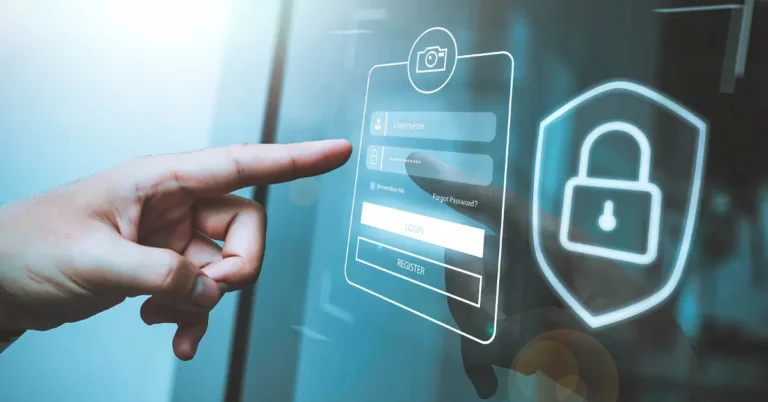Permissive hypertension is a term used to describe a type of high blood pressure deliberately allowed to remain high in patients with stroke to enhance blood flow to the brain and reduce the risk of further damage. Although permissive hypertension may be beneficial, it also carries risks that need to be carefully managed.
This article aims to provide patients with a better understanding of permissive hypertension, including its potential risks, management, and treatment options. Additionally, we will discuss how remote patient monitoring (RPM) can aid in the management of permissive hypertension.
What is Permissive Hypertension?
Permissive hypertension is a medical technique where healthcare professionals intentionally maintain a patient’s systolic blood pressure at a higher level than the normal range for a certain period, to achieve specific treatment objectives. This approach is commonly used when reducing blood pressure quickly may be harmful or result in adverse health outcomes, and so a higher blood pressure is allowed temporarily.
Long-Term Health Consequences if Left Untreated
If a person’s blood pressure is left uncontrolled, it can result in a multitude of severe long-term health issues. Neglected permissive hypertension can heighten the risk of heart disease, stroke, kidney failure, and vision problems. In addition, it may contribute to other medical conditions such as sleep apnea, which can worsen the situation.
Furthermore, untreated permissive hypertension can harm blood vessels and promote the development of atherosclerosis, leading to a higher probability of heart attack and stroke. Untreated permissive hypertension can be particularly detrimental to stroke patients who are already at risk of experiencing another stroke. Over time, the kidneys may also suffer damage, resulting in chronic kidney disease. Therefore, managing permissive hypertension and seeking prompt medical attention is crucial in preventing these adverse health outcomes.
Permissive Hypertension in Stroke
Permissive hypertension is a technique used in the management of acute ischemic stroke. Doctors typically reduce a person’s hypertension medication for the first 24 to 48 hours after the onset of stroke to maintain higher blood pressure within the recommended blood pressure range of less than or equal to 220/120 mm Hg. This approach is in accordance with the guidelines for the early management of patients with acute ischemic stroke recommended by the American Heart Association and American Stroke Association.
Ischemic stroke is the most common type of stroke, accounting for about 87% of all strokes. It occurs when blood flow to the brain is blocked, and the brain tissue is deprived of oxygen and nutrients. Permissive hypertension is used to prevent further damage to the brain tissue during the acute phase of ischemic stroke, within the first 24 hours after onset.
While permissive hypertension can reduce the risk of stroke symptoms, it is important to note that it can increase the risk of hemorrhagic stroke, which is caused by bleeding in the brain.
Therefore, doctors rarely recommend permissive hypertension in the management of acute ischemic stroke.
Hypertension is a significant risk factor for stroke. Maintaining healthy blood pressure levels is one of the ways to reduce the risk of stroke. The management of patients with acute ischemic stroke requires careful consideration of blood pressure after stroke onset to prevent further damage to the brain tissue and facilitate stroke recovery.
Management and Treatment Options for Permissive Hypertension
How to Monitor and Manage Hypertension
Permissive hypertension is a condition where the blood pressure is allowed to remain elevated for an extended period, and it is crucial to monitor and manage it to prevent complications and long-term health consequences. Here are some tips on how to monitor and manage permissive hypertension:
- Regular blood pressure checks: It is important to have your blood pressure checked regularly by a healthcare professional.
- Keep a blood pressure log: Recording your blood pressure readings in a log can help you and your healthcare provider monitor changes and adjust your treatment plan as necessary.
- Follow a treatment plan: If you have permissive hypertension, it is important to follow a treatment plan that includes medication and lifestyle changes. Be sure to take your medications as prescribed and make healthy lifestyle choices such as exercising regularly and maintaining a healthy diet.
- Manage stress: Stress can cause blood pressure to rise, so it is important to manage stress through techniques such as deep breathing, meditation, or yoga.
- Quit smoking: Smoking can contribute to high blood pressure and other health problems. If you smoke, quitting can help lower your blood pressure and improve your overall health.
- Remote monitoring solutions: With the advancement of technology, RPM solutions are becoming more common. RPM technology allows healthcare providers to monitor blood pressure readings remotely and adjust treatment plans as necessary. This is especially useful for patients who have difficulty traveling to appointments or who live in remote areas.
Medications and Lifestyle Changes That Can Help in Hypertension Management
There are several medications that can be used to manage permissive hypertension, including diuretics, ACE inhibitors, beta-blockers, calcium channel blockers, and angiotensin receptor blockers. These blood pressure medications work to lower blood pressure and reduce the risk of long-term health consequences. However, it’s important to note that medications should be used in conjunction with healthy lifestyle changes for lowering blood pressure, rather than as a standalone solution.
Healthy lifestyle changes that can help manage permissive hypertension include:
- Regular exercise: Aim for at least 30 minutes of moderate intensity exercise most days of the week.
- Healthy diet: A diet rich in fruits, vegetables, whole grains, and low-fat dairy products can help lower blood pressure.
- Weight management: Maintaining a healthy weight can help reduce blood pressure.
- Reduced salt intake: Limiting salt intake to less than 2,300 milligrams per day can help lower blood pressure.
- Limited alcohol consumption: Drinking in moderation, which means up to one drink per day for women and up to two drinks per day for men, can help lower blood pressure.
It is important to work with your healthcare provider to develop a personalized treatment plan that incorporates both medications and lifestyle changes. Regular monitoring of blood pressure is also essential to ensure that treatment is effective.
Role of DrKumo Remote Patient Monitoring in Permissive Hypertension
DrKumo is a technology leader in highly scalable, continuous, real-time remote monitoring solutions for hospital care at home. For stroke survivors with permissive hypertension, DrKumo RPM technology solutions can be a user-friendly and essential tool for stroke prevention and early management of your condition.
With DrKumo RPM at-home medical devices, including a continuous glucose monitor, you can continuously and remotely monitor your blood pressure and other vital signs. By providing real-time data and intelligence, you and your healthcare providers can work together to adjust your treatment plan as needed, ensuring that your blood pressure remains within safe limits. This timely intervention can help prevent recurrent stroke and reduce the risk of adverse events associated with permissive hypertension.
The DrKumo state-of-the-art RPM system can also provide educational resources and support, helping you better understand your condition and make informed decisions about your treatment. With user-friendly interfaces, you can easily monitor your blood pressure readings and receive feedback on your progress, enabling you to take an active role in your stroke care and hypertension treatment.
By leveraging DrKumo RPM’s continuous monitoring capabilities, you can achieve a balance between blood pressure control and your safety. This can promote your comfort and well-being while reducing the risk of adverse events associated with permissive hypertension. With DrKumo RPM, you can take control of your health and prevent recurrent stroke, improving your overall health and quality of life.
Takeaways
Monitoring blood pressure is crucial for maintaining good health and preventing serious health problems like heart disease, stroke, and kidney disease. DrKumo RPM technology can help patients manage their blood pressure and overall health, leading to better health outcomes. Furthermore, since stroke remains a significant health risk, especially for patients with acute stroke, encouraging blood pressure monitoring and timely medical help can play a vital role in stroke prevention.
Control permissive hypertension from home with real-time monitoring and AI-powered RPM. Avoid stroke. Contact DrKumo now!
Disclaimer: Permissive hypertension is a medical condition that should be managed under the guidance of a healthcare provider. Please do not self-diagnose or self-treat.








